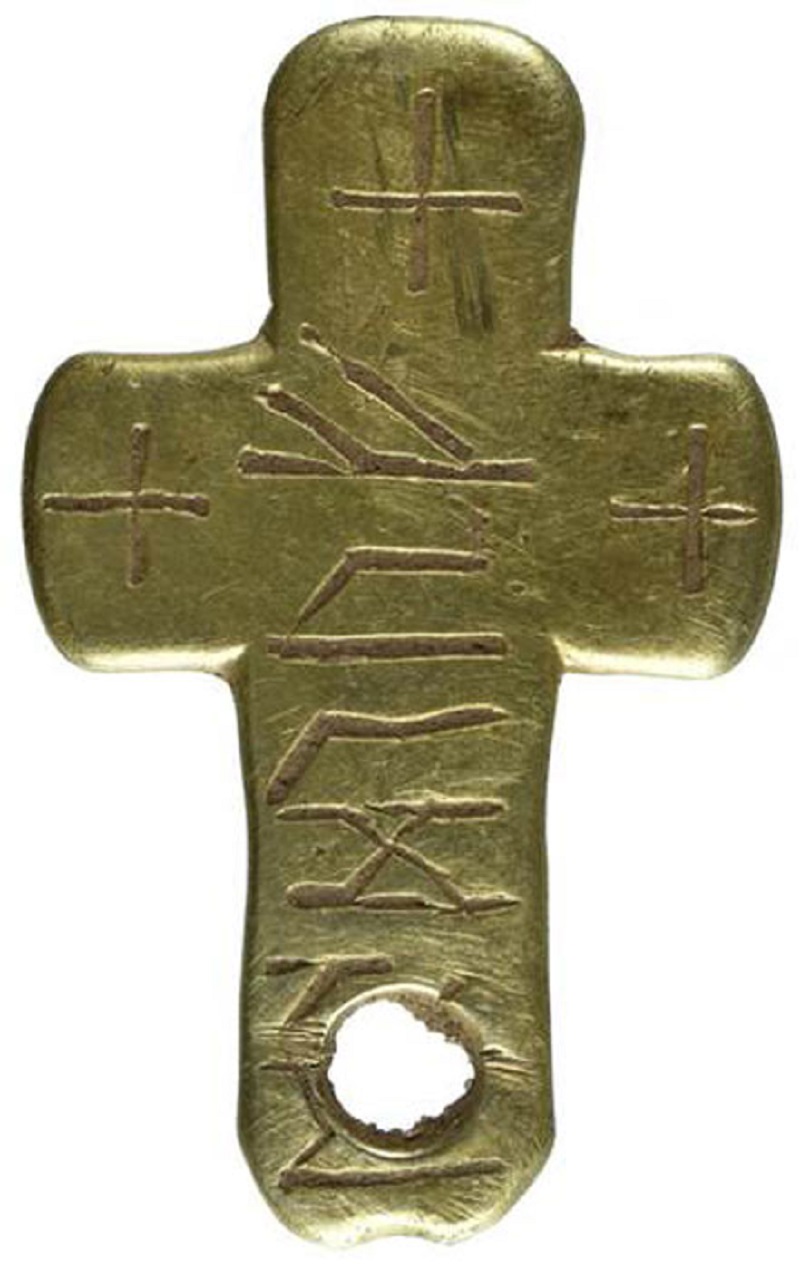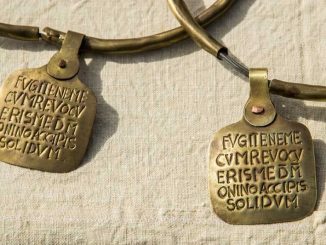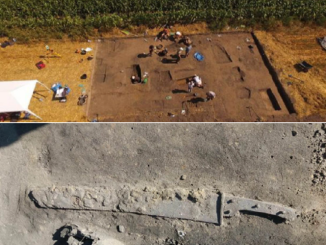An unusual object unearthed by metal detectors in 2020 in northeastern England is puzzling scholars. In this case, it is not archaeologists who are confused, but linguists who study the origins and evolution of English. The artifact in question is a small golden medieval cross found along the banks of the River Tweed near Berwick in the northern English county of Northumbria. The existence of this medieval cross was recently announced by the British Museum, as part of its annual reveal of important archaeological finds unearthed in the UK in the previous year.
Runic inscriptions on a golden medieval cross found in Northumbria show who owned it. (History blog)
Small gold medieval cross pendant has left experts baffled
The tiny precious metal medieval cross is only 1 inch long and 0.6 inches wide (2.5 x 1.5 cm) and has a hole at one end suggesting it was worn as a pendant. Scholars have determined that the cross was made sometime between 700 and 900 AD, when the region of Berwick in the Kingdom of Northumbria was an important center of Christian worship.
Cross pendants are not unusual, and other pendants made from gold have been found. What makes this small cross extremely rare is that it is inscribed with runic script and it is the first medieval crucifix pendant to be found with this feature.
And when the runic script was decoded, it created quite a surprise. The six-letter message appears to identify the owner of the cross, a man apparently named Eadruf.
This is a most unusual name, as it is the only name found since medieval times that contains the word “ruf”. Such an element had not previously been discovered in any language of the Germanic language family.
The appearance of this etymological anomaly raises an interesting question: Who exactly is this Eadruf? And how did he get a name that no one else living in medieval England shared?

Eardwulf of Lindisfarne may have been the original owner of the golden medieval cross. In the ninth century, he was bishop of a monastic community originally located on the Holy Island of Lindisfarne, just off the northeast coast of England. (Chris Combe / CC BY 2.0 )
A linguist has a theory about Eadruf
Historians believe that the person known as Eadruf may have been aristocratic or wealthy. They reasoned that only those with money could afford a pendant made from solid gold.
If this person was in fact an influential or powerful individual then it is curious that he would not be mentioned in any preserved documents from that time. Even though he lived more than 1,000 years ago, he must still be mentioned somewhere in the historical record.
Professor John Hines, an archaeologist and ancient linguistics expert from Cardiff University, has a theory as to who the person mentioned on the pendant could be.
Hines suggests that the unique name Eadruf may actually have been a nickname or a shortened version of a name that was quite popular among the upper classes of Northumbria in ancient times.
It is possible, Professor Hines told the Telegraph, that Eadruf is a shortened form of Eardwulf. The latter was a popular name in the ninth century and was used by a number of famous historical figures. Included in this list is a particularly interesting man whose profile matches that of someone who may have owned a gold crucifix pendant.
This individual is Eardwulf of Lindisfarne. In the ninth century, he was bishop of a monastic community originally located on the Holy Island of Lindisfarne, just off the northeast coast of England.
Finally, members of the monastic community began a long and arduous migration from the Holy Island of Lindisfarne to Durham, located in the south of Northumbria. Eardwulf undertook this adventure because of the threat from Viking invaders, who he feared would raid Holy Island and steal the remains of the legendary Saint Cuthbert, which was in the care of the abbey.
Eardwulf would have been known in the Berwick area (Berwick is very close to Holy Island), and he must have passed through there on his tortuous seven-year journey south. Even if he was not the owner of the cross, he may have inspired it, as the person who commissioned it may have chosen to put the name of a revered religious leader on the side. his cross necklace, not his own name.
Page from the Northumbria Lindisfarne Gospels, circa 700 AD, depicting an exaggerated knotted work attributed to Eadfrith of Lindisfarne, who preceded Eardwulf of Lindisfarne by some 150 years. (Eadfrith of Lindisfarne / Public Domain)
Do archaeological detective work when clues are scarce
At this time, all attempts to determine the true owner of the mysterious golden cross are just speculation. There seems to be no way to determine exactly who the cross might belong to or how it got there. The location along the River Tweed where prospectors discovered it is not the site of a medieval settlement but instead appears to be a desolate area. This suggests that the owner of the golden cross simply lost it en route through the territory and if that is the case identifying that individual would seem impossible.
When archaeologists excavate multiple artifacts from the same site, they can piece these pieces together to better understand the cultures that left them. Sometimes, they can even link interesting items to specific individuals who lived or worked at those locations in ancient times. But when a lone object is found in an isolated location, contextual clues are missing. and so it can be extremely difficult to determine anything about who created the artifact and why.
According to Ben Westwood, liaison officer for archaeological finds in the Durham region, the individual who owned the gold cross pendant “was clearly associated with… early medieval, early Christian structures.” of the Northeast.” This may be all that is ever known about the owner of the pendant, unless a more compelling and conclusive reference to Eadruf is found elsewhere in the archaeological record or history.




